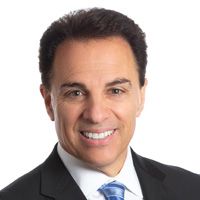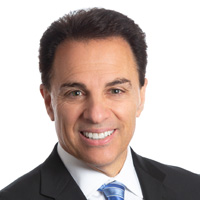3 Strategies to Avoid Running Out of Money in Retirement
For a financially sustainable retirement that could last 30 years or more, here are three ways to help manage your risks and avoid financial roadblocks in your golden years.


The trend of increasing life expectancy means that Americans are much more likely to live 25, 30 or even 35 years in retirement. The benefits of this trend include spending more time with your family and a higher chance of meeting your great-grandchildren. The downsides include the increased potential for running out of money close to the end of this retirement.
Today’s retirees can expect to live 40% longer than those who retired 70 years ago. Recent research reveals that affluent Americans are likely to live longer. This means that if you’ve had consistent access to health care and high income, you are more likely to enjoy a longer lifespan. Men in the top quintile of income born in 1960 will live on average 12.7 years longer than men who are in the lowest quintile of income; for women the equivalent is 13.6 years.
These raw numbers can be headache-inducing. However, the implications are profound. What they mean basically is that those who have recently retired or who are getting ready to retire, one out of three women and one in five men can expect to live to 90 years or beyond.
From just $107.88 $24.99 for Kiplinger Personal Finance
Become a smarter, better informed investor. Subscribe from just $107.88 $24.99, plus get up to 4 Special Issues

Sign up for Kiplinger’s Free Newsletters
Profit and prosper with the best of expert advice on investing, taxes, retirement, personal finance and more - straight to your e-mail.
Profit and prosper with the best of expert advice - straight to your e-mail.
As retirements lengthen, they require more financial resources to support not only day-to-day expenses, but also the increased health care expenses that can crop up due to aging. It’s no surprise then, that 60% of pre-retirees surveyed by Allianz fear running out of money in retirement.
Fortunately, holistic retirement planning built around three strategies — minimizing taxes, managing savings and reducing market downside risks — can help to mitigate the risk of running out of money in retirement.
Strategy #1: Minimize Your Taxes
Most retirees fund their expenses in retirement through a combination of Social Security and retirement savings from company-sponsored retirement accounts. What many retirees don’t realize is that in most cases, part of Social Security is taxed, and that withdrawals from traditional company-sponsored retirement plans are taxable.
That means that money you may have counted on to help pay your bills in retirement will, instead, need to be paid to federal, state and local governments in the form of taxes. While state and local taxes depend on where you live — nine states levy no state income tax — everyone must pay federal taxes.
In the case of Social Security benefits, if you and your spouse’s income from all sources — including Social Security — is between $32,000 and $44,000 a year, up to 50% of your Social Security is taxable. If your income from all sources is greater than $44,000 a year, up to 85% of your benefit is taxable. If you are single, up to 50% of your Social Security benefit is taxable if your income from all sources is between $25,000 and $34,000. If that income exceeds $34,000 a year, up to 85% of your Social Security is taxable.
As far as your retirement savings go, if your retirement savings are in a traditional 401(k) or IRA, that means you got a tax deduction when you made your original contributions. When you start withdrawing those funds during retirement, you must pay taxes on those withdrawals. The exact amount of taxation depends on your other sources of income and your tax bracket. Even if you don’t need that money to pay your bills in retirement, IRS rules mandate that you begin to withdraw money from those accounts by making required minimum distributions at age 72.*
As a result of this taxation of retirement income, you may be shocked to realize that your tax rates aren’t much lower than they were during your working years. There’s also another potential bump in the road when it comes to retirement taxation: Taxes may rise in future years.
That’s because a rising number of retirees — 10,000 baby boomers are currently retiring every day — will put more strain on Social Security and other entitlement programs, such as Medicare and Medicaid. There’s also the unpleasant fact that the federal budget deficit continues to spiral to unimagined heights due to the relief measures required for the COVID-19 pandemic.
One fairly simple way to reduce your tax liabilities during retirement is to engage in strategic Roth IRA conversions between when you retire and when you need to begin taking required minimum distributions at age 72. This is a “sweet spot” for Roth conversions because you will likely be in a lower tax bracket as long as you delay tapping your retirement accounts.
The lower your tax bracket, the cheaper it is to convert traditional IRAs to Roth IRAs. Why? Because you must pay taxes on the conversion at the time you convert. For example, if you convert $10,000 to a Roth IRA from a traditional IRA and you are in the 24% federal tax bracket, you will pay $2,400 in federal taxes to convert. It’s a good idea to have the funds to pay the taxes in a savings account, because taking out more money to pay the taxes will increase your tax liability. If you live in a state with state income taxes, you will also owe state income taxes on your conversion.
Other options to lower your tax liability during retirement include purchasing a whole life insurance policy.
Strategy #2: Manage Your Savings
Your primary focus in looking toward retirement should be making certain you will have a steady stream of income to support yourself and your partner, if you have one. The No. 1 priority in retirement is replacing your income from work with ongoing income from your retirement savings, Social Security — and any other sources — to pay your bills.
This means changing your mindset when it comes to investing. When saving for retirement, lower-cost passive investment types, time and employer contributions all work together to increase the value of your account, helping you toward your goal of being able to afford to retire.
However, when you retire, your situation changes from accumulating money for retirement to spending money from your retirement accounts to support your lifestyle. That means that a strategy that worked well pre-retirement may not work so well in a completely different situation.
If you try to stick with this strategy, you may find yourself withdrawing too much money to pay your bills, which will increase the odds that you’ll run out of money in retirement. Instead, consider switching to other types of investments and retirement vehicles that can generate the types of income you’ll need in retirement. Some possibilities include annuities and dividend investing. (The ideas and strategies expressed herein should never be used without first assessing your own personal and financial situation, or without consulting a financial professional.)
Strategy #3: Reduce Market Downside Risk
While the market historically has had an upward bias, there’s no way to know what type of market will occur when you retire. Analysis of past markets reveals that investors who retire during or right before a bear market can potentially face a severe risk to their retirement financial stability. That risk is known as sequence of returns risk.
Retiring during or shortly before a bear market can be a risk, because a bear market can erode the value of your savings just as you enter retirement. For example, if you retired in early 2007 at the beginning of the financial crisis, your stock portfolio would have fallen by approximately 50%. For a $1 million retirement portfolio divided 50% in stocks and 50% in bonds, the loss during that period could have been as much as $250,000, or 25% of your retirement savings. That’s a lot of money, which could have damaged your ability to continue to withdraw money at the same rate throughout retirement, increasing the chance of running of money later in retirement.
To help avoid this risk, it is important to have a good understanding of how you are currently invested and whether it may be beneficial to look at other investment types that may have additional features and options. (Consult with your financial professional before making any changes.) One tactic is to place two years of retirement expenses in a safe, liquid savings account. Another strategy involves purchasing a fixed index annuity with a yearly penalty-free withdrawal option of up to 10% of the annuity’s value, which you can access in a pinch.
These options may help preserve the type of financial flexibility that is useful in retirement.
A final word
Planning for retirement can often appear scary, and because of this, too many people put it off to the point where they suffer from avoidable financial bumps and bruises. As you move closer to retirement, consider implementing these strategies to help you enjoy your golden years and minimize the risks all retirees face.
*This new rule applies to individuals born on July 1, 1949, or later. For others born before then, the previous RMD rule of 70½ applies.
The information provided in this article does not constitute any legal, tax or accounting advice. Please consult with a qualified professional tax professional before implementing any strategy.
Profit and prosper with the best of Kiplinger's advice on investing, taxes, retirement, personal finance and much more. Delivered daily. Enter your email in the box and click Sign Me Up.

Domenic Rizzi started his career in the financial service industry in 1986. He has helped many clients reach their financial goals, as many have been with him for 30 years or longer. He is dedicated to developing lifelong relationships. This only happens if people are happy and believe that he has the highest level of dedication, integrity and respect.
-
 Stocks See First Back-to-Back Losses of 2026: Stock Market Today
Stocks See First Back-to-Back Losses of 2026: Stock Market TodayRising geopolitical worries and a continued sell off in financial stocks kept pressure on the main indexes on Wednesday.
-
 Countries That Will Pay You to Move: Cash Grants, Incentives and What to Know
Countries That Will Pay You to Move: Cash Grants, Incentives and What to KnowExplore real relocation incentives — from cash grants and tax breaks to startup funding — that make moving abroad or to smaller towns more affordable and rewarding.
-
 Mortgage Protection Insurance: What It Covers and When It Makes Sense
Mortgage Protection Insurance: What It Covers and When It Makes SenseHow mortgage protection insurance works, what it costs, and when it’s actually useful in a financial plan.
-
 I'm a Real Estate Expert: 2026 Marks a Seismic Shift in Tax Rules, and Investors Could Reap Millions in Rewards
I'm a Real Estate Expert: 2026 Marks a Seismic Shift in Tax Rules, and Investors Could Reap Millions in RewardsThree major tax strategies will align in 2026, creating unique opportunities for real estate investors to significantly grow their wealth. Here's how it works.
-
 When Can Tax Planning Be an Act of Love? This Family Found Out
When Can Tax Planning Be an Act of Love? This Family Found OutHow can you give stock worth millions to a loved one without giving them a huge capital gains tax bill? This family's financial adviser provided the answer.
-
 Forget Job Interviews: Employers Will Find the Best Person for the Job in an Escape Room (This Former CEO Explains Why)
Forget Job Interviews: Employers Will Find the Best Person for the Job in an Escape Room (This Former CEO Explains Why)Escape rooms can give employers a better indication of job candidates' strengths than a standard interview. Here's how your company can get on board.
-
 The Paradox Between Money and Wealth: How Do You Find the Balance?
The Paradox Between Money and Wealth: How Do You Find the Balance?Wealth reflects a life organized around relationships, health, contribution and time — qualities that compound differently than money in a mutual fund.
-
 Billed 12 Hours for a Few Seconds of Work: How AI Is Helping Law Firms Overcharge Clients
Billed 12 Hours for a Few Seconds of Work: How AI Is Helping Law Firms Overcharge ClientsThe ability of AI to reduce the time required for certain legal tasks is exposing the legal profession's reliance on the billable hour.
-
 General Partner Stakes: Why Investors Are Buying Into the Business of Private Equity
General Partner Stakes: Why Investors Are Buying Into the Business of Private EquityGP stakes in asset management firms offer exposure to private markets and are no longer just for the wealthy. Find out why it looks like a good year to invest.
-
 5 Golden Rules We (Re)learned in 2025 About Investing
5 Golden Rules We (Re)learned in 2025 About InvestingSome investing rules are timeless, and 2025 provided plenty of evidence demonstrating why they're useful. Here's a reminder of what we (re)learned.
-
 I'm a Financial Adviser: Here's How to Earn a Fistful of Interest on Your Cash in 2026 (Just Watch Out for the Taxes)
I'm a Financial Adviser: Here's How to Earn a Fistful of Interest on Your Cash in 2026 (Just Watch Out for the Taxes)Is your cash earning very little interest? With rates dropping below 4%, now is the time to lock in your cash strategy. Just watch out for the tax implications.